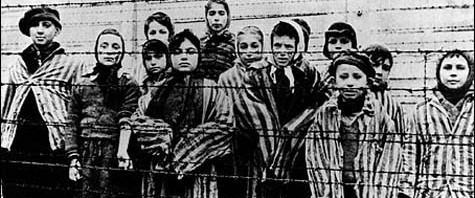source: Romea.Cz

We have just marked the 76th anniversary of the Night of Broken Glass (Kristallnacht or Novemberpogrom). In different cities across Germany and Austria a series of pogroms were perpetrated against Jewish civilians, stores and synagogues on the night between the 9th and the 10th of November while German authorities did nothing to prevent them. Those attacks were the prelude to the criminal racial policy that led to the Holocaust, in which six million Jews and five hundred thousand Roma were murdered.
How does the remembrance of this dramatic night challenge Europe today?
Since January 2007, when Romania and Bulgaria joined the European Union, we have witnessed increasing political alarm about the “Gypsy threat” with respect to Roma immigrants migrating from these two countries into Western Europe. A huge police force has now been deployed by France and Italy to control these Roma immigrants. The anti-Gypsy measures include special surveillance systems and ultimately, forced evictions.
Thanks to the media spectacle created around these cases, the Roma community in Europe has become much more visible, not only as migrants, but also as the largest and oldest minority in Europe nowadays. According to data provided by the Council of Europe, 12 million Roma live in Europe, half of whom live in EU Member States. Since 2010 over 15 pogroms have occurred against Roma neighborhoods in countries such as France, Spain, UK, Ireland, Italy, Greece, Bulgaria, Slovakia, Hungary or the Czech Republic.
Despite the fact that, in many cases, these pogroms are organized by neo-Fascist gangs, the political reactions to these events have not defined them as racist crimes, but as spontaneous reactions by civilians against the “deviant behavior” of Roma individuals. These accounts have often emphasized a need for Roma people to make a special effort to integrate. In some cases the political discourse is even more radical, pointing out that Roma people themselves should make an effort to leave lifestyles associated with the informal economy and crime and try to integrate into the labor market – without there being any real provisions for members of the Roma community to gain dignified jobs or be shielded from discrimination on the job market.
The projection of this image of the “criminal lumpen” onto the Roma people has been prevalent across Europe. One of the most representative cases took place in October 2013 in Dublin, Ireland, when the state took custody of a seven-year-old girl from a Roma family on the suspicion that she was a stolen child because she has blue eyes, blond hair and white skin, unlike her parents (in the view of the authorities). After spending four days in an orphanage, she was ultimately returned to her parents after DNA testing proved the couple were indeed her biological relatives.
The tragic situation of social and institutional racism faced by Roma in Europe contrasts with the phantasm of a “Gypsy world” associated with passion, beauty and freedom, as represented by the figure of Esmeralda in Victor Hugo’s The Hunchback of Notre Dame and other examples of popular culture and more current efforts to Orientalize or reify “Roma culture”.
A step toward breaking with these stigmatizing and Orientalizing stereotypes is to project an image of the Roma people that transcends the collective imaginary which, for centuries, has shaped a dual approach of fascination and fear towards Roma and has produced racism. Linking Roma in an essentializing fashion to theft and crime without explaining their dire material conditions and the exclusion from labor, welfare, and human rights suffered by many members of their community perpetuates racism. Reducing anti-Roma sentiment only to economic determinants is an attempt to evade discussion of the other side of this Orientalizing racism that associates Roma with magic, music and dance, and simultaneously victimizes and romanticizes members of the Roma community. Both these strategies deprive Roma people of their basic dignity and their rights to the social and economic recognition European citizens should ideally enjoy.
First published 17 November by the Socialist Workers Party newspaper in Ireland.
Ismael Cortés

